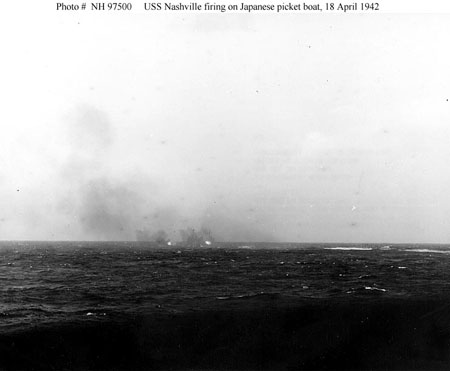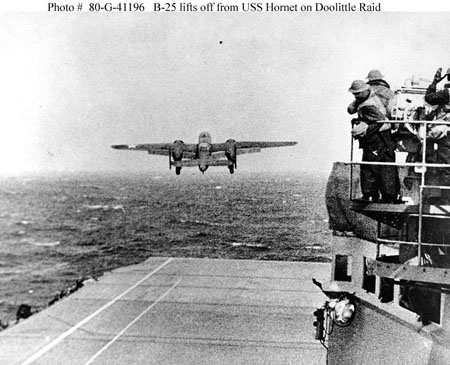Peter Moon (Vincent Barbarick) stated that Marcus Island was attacked twice in the spring of 1942. "Once on March 4 by USS Enterprise, and was a primary target of the Doolittle Raid in June 1942".
https://www.youtube.com/watch?v=otHmI2CSxZ4&t=4475s 1:14:00 - 1:14:38
Although Moon is correct that the USS Enterprise Group conducted a pre-daylight bombing and strafing raid on Marcus Island the morning of March 4, 1942, his claim that Marcus Island was a primary target of the Doolittle Raid in June 1942 cannot be true. |
| Battle Damage Assessment Drawing - 4 March 1942, US Navy |
Marcus Island is approximately 1,000 miles South East of Tokyo and the addition of such a distance to a bombing route that included Marcus Island which was 1,000 miles to the South of USS Hornet was not possible since the B-25s were carrying full fuel and bombloads and intended to reach Mainland China after attacking Tokyo. An attack on Marcus Island would have resulted in the aircraft running out of fuel before even reaching or possibly over Japan.
At 07:38 on the morning of 18 April, while the task force was still about 650 nautical miles (1,200 km; 750 mi) from Japan (around 35°N 154°E), it was sighted by the Japanese picket boat No. 23 Nittō Maru, a 70-ton patrol craft, which radioed an attack warning to Japan.[32] The boat was sunk by gunfire from USS Nashville.[note 6] The chief petty officer who captained the boat killed himself rather than be captured, but five of the 11 crew were picked up by Nashville.[34]
Doolittle and Hornet skipper Captain Marc Mitscher decided to launch the B-25s immediately—10 hours early and 170 nautical miles (310 km; 200 mi) farther from Japan than planned.[note 7] After respotting to allow for engine start and runups, Doolittle's aircraft had 467 feet (142 m) of takeoff distance.[35] Although none of the B-25 pilots, including Doolittle, had ever taken off from a carrier before, all 16 aircraft launched safely between 08:20 and 09:19. The B-25s then flew toward Japan, most in groups of two to four aircraft, before flying singly at wave-top level to avoid detection.[36]
During WW2, Japan was able to resupply the garrison by submarine, using the boat channel, still visible today. The channel was created from 1931-1933 when the Japanese militarized the island.
American missions against Marcus Island and Marcus Airfield
March 4, 1942–July 4, 1945
March 4, 1942
(USN) First strike on Marcus USS Enterprise Task Force 16 (TF-16) under the command of Vice Admiral W. F. Halsey launches air attacks on Marcus Island, first carrier raid of the Pacicic War.August 31, 1943
(USN) Second Raid on Marcus - Task Force 15 (TF-15) under the command of Rear Admiral C. A. Pownall), built around Essex, the new Yorktown and Independence launched nine strike groups in a day-long attack on Japanese installations on Marcus Island, the first strikes by Essex and Independence Class carriers, and the first combat use of the F6F Grumman Hellcat.May 19-20, 1944
(USN) Third Raid on Marcus - Planes from a three-carrier task force under the command of Rear Admiral A. E. Montgomery hit Marcus with a predawn fighter sweep and strafed and bombed the island for two consecutive days.












No comments:
Post a Comment